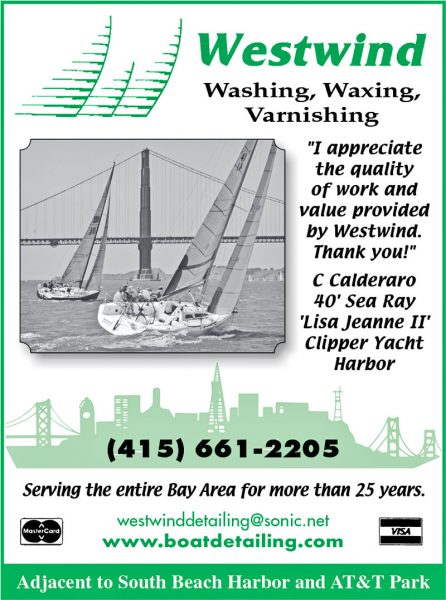
The Weekend Report
“I’m sailing! I sail! I’m a sailor!”
Every time we manage to get our Columbia Challenger out on the Bay, we find ourselves echoing those famous lines by Bob Wiley, Bill Murray’s character in What About Bob? It’s not that we’re never on the water; we’ve had an amazing season of windsurfing thus far. But our obsessive attention to that pursuit has caused us to neglect our 24-ft daysailer (with overnight capabilities) Esprit. Saturday was our first proper summer cruise, which included plans to spend the night on the hook at China Camp.
The sailing was the usual mix of light wind through San Rafael Bay’s many wind-blocked patches of water, followed by sporty ebb conditions in San Pablo Bay.
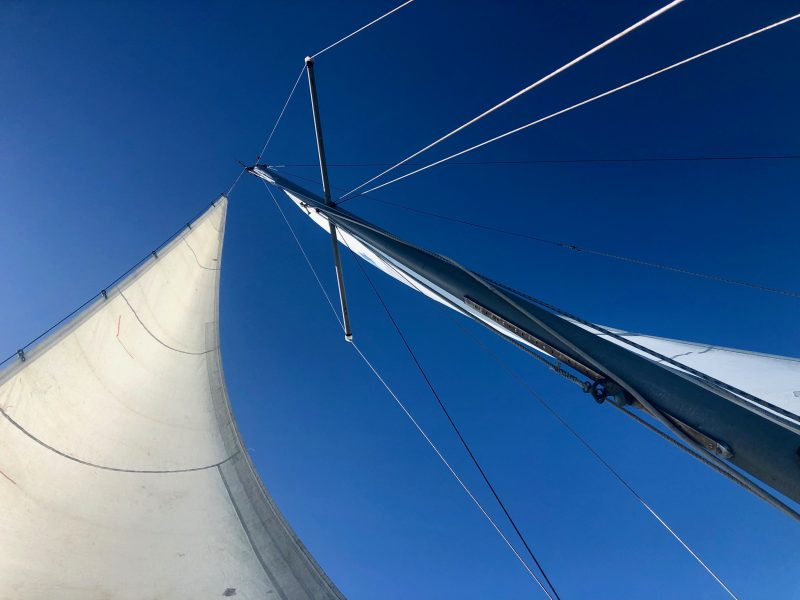
San Rafael and San Pablo bays are often a mishmash of colors — swaths of muddy brown sit against lakes of blue-green, giving the Bay a rare tropical-ish look. On Saturday, we sailed from brown to blue as if we were Dorothy opening the door into Munchkin Land.
Another unique local phenomenon is the many rivers of fog that veer with near-clockwork regularity into the specific lanes across the water. Of particular interest was the tendril of cloud stretching from he Gate across Albany and Richmond. Normally, we’re under-ish this bank while windsurfing at Point Isabel. One of the pleasures of sailing — sailboat sailing, that is — is seeing the same things from a different perspective. It was endlessly fascinating to watch a geyser of fog blast into the Richmond hills, then evaporate into sunshine and blue sky.
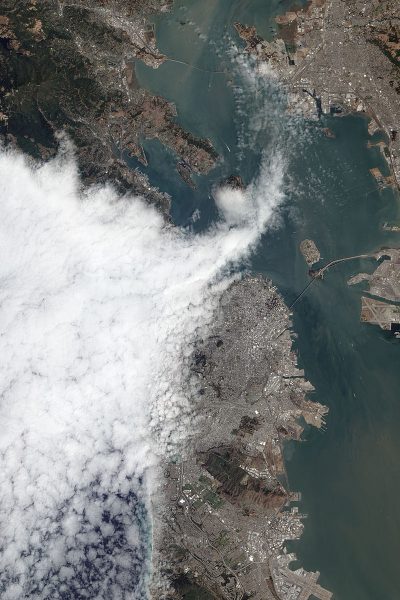
Epiphany for the weekend: Be ready to change your plans both in a hurry and often, because the conditions don’t give a damn about how badly you want to drop the anchor, have a cold glass of rosé, relax and enjoy a peaceful sunset at anchor. This is likely the most no-brainer maxim you’ve ever heard, but for those of us new to the Bay cruising game, it was difficult to accept when China Camp went from moderately (but tolerably) bumpy to roiling and nearly a lee shore. We tried to convince ourselves to stay when it was clearly time to go.
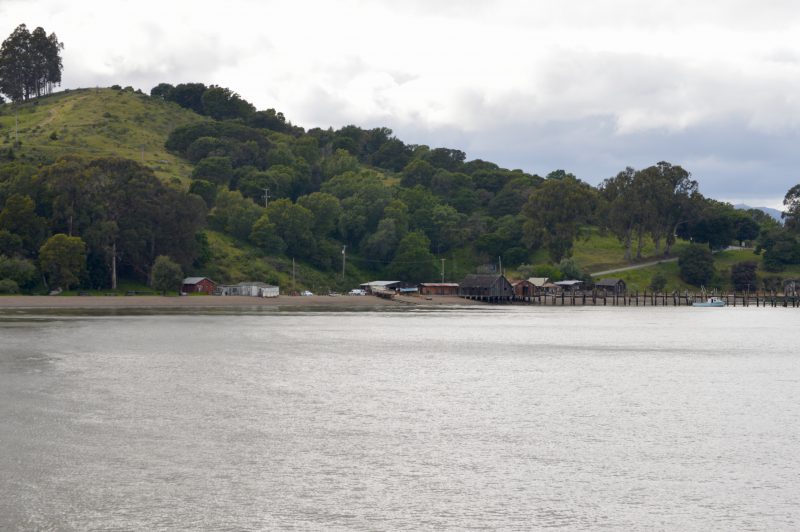
But changing plans often affords an unexpected silver lining, like catching a sunset on the way back to the dock.
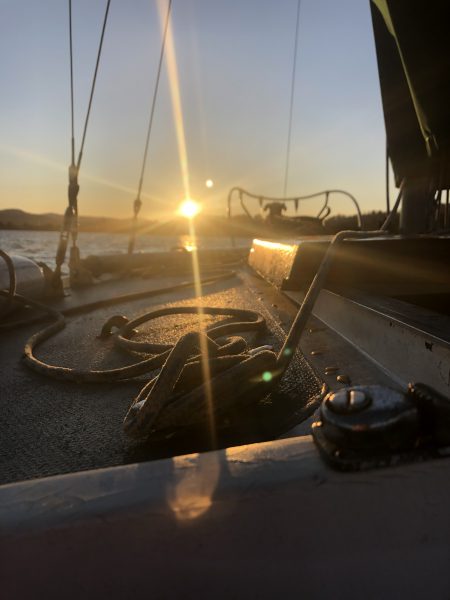
So, to recap: The Bay was pretty, foggy, windy, not windy, ultimately uncaring of our plans and generally predictable in its chronic unpredictability.
That was our weekend, Latitude Nation. How was yours? Please write us here, or comment below. Pictures are encouraged!
Sacrificial Sliding Hatch
Sampaguita, my Flicka 20 sailboat, was built in 1985. When I bought the boat in 2013, it had already experienced some wear and tear. One urgent issue to address was the sliding companionway hatch and the channels on the cabin top that it nested in. These surfaces had been worn down over the years. Since I would be living aboard, the hatch would be worked multiple times a day. I needed to act quickly to prevent further damage.
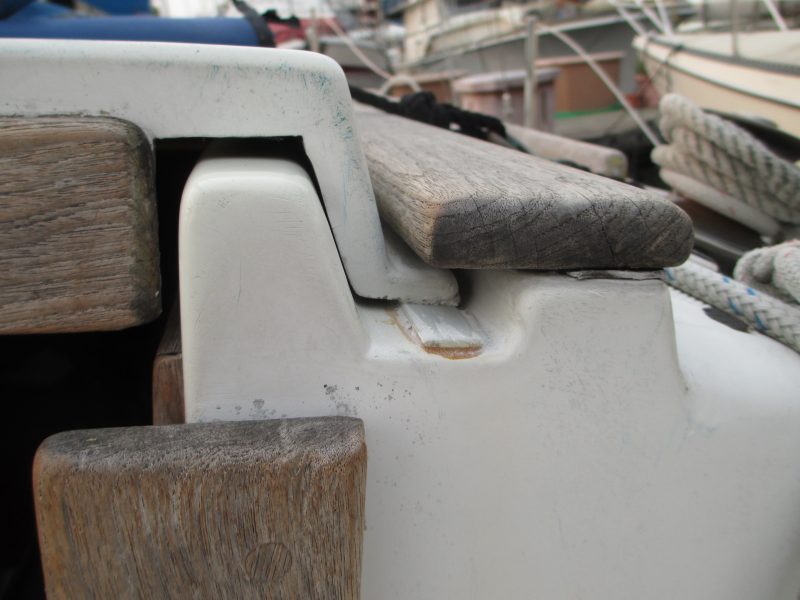
The companionway hatch runners were designed to fit into channels molded in the cabin top, both with gel coat surfaces. Teak cap rails were screwed into the cabin top over these channels, capturing the runners. The years had not been kind to these mated surfaces, and the sliding had worn the gel coat considerably. The substrate was showing in the channels, and even further wear was evident on the runners. The hatch clearance decreased as this happened, and a previous owner had cut out notches for allowance.
A proper repair would be to remove the teak rails and gain access to the hatch runners and channels, then build up the worn edges on the runners with fiberglass and resin to the original dimension, gel coat the surfaces of both the hatch and the channels, and reinstall the teak rails.
While I just summed up the project in two sentences, I was aware that it would not be as simple as that. Repairs often aren’t. It was February and not an ideal time to work with the necessary chemicals, or to be without a hatch. When I had more knowledge, time, and funding, I would tackle the proper repair. To tide me over until then, I decided to brainstorm for a stopgap solution to preserve the situation in its present state.
While I was looking through my storage unit, some old sail battens caught my eye, and I wondered, “What if . . .?” I took them to the boat and started experimenting. They were narrow enough to fit in the channels and thin enough to slide under the hatch. After fully inserting the first batten, I realized I could add a second, cut to fit, to cover the full length. Repeating on the other side, I sparingly glued these pieces in place with Gorilla Glue to keep them stationary in the channel.
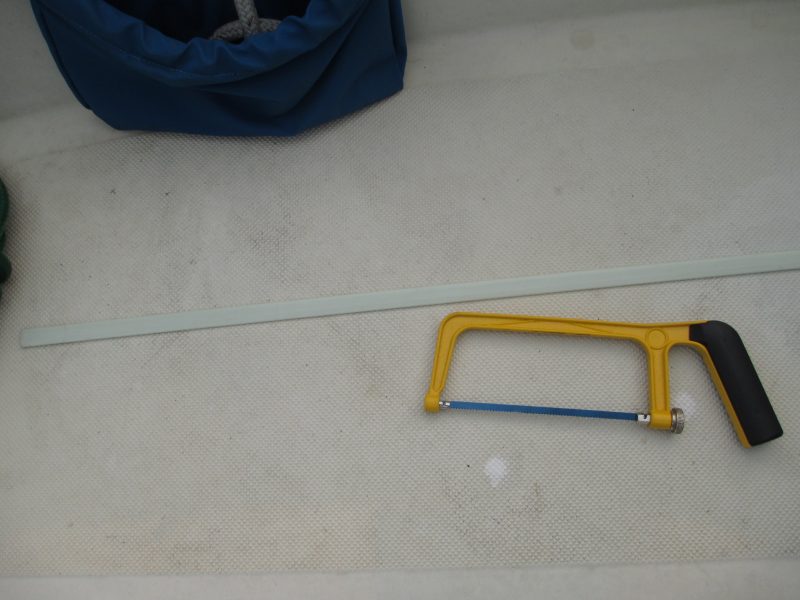
Taking more of the same batten material, I cut four 2″ long pieces. When glued to the hatch, these would serve as “feet.” I was able to lift the hatch just enough to insert the glue-coated pieces underneath each corner, its weight providing the set. Now the contact points are batten-on-batten when the sliding hatch is opened and closed.
This simple, stopgap solution has been working for six years. The battens protecting the channels have flattened some from wear, but haven’t needed replacement. The glue has been adequate to keep them fixed in position. The 2″ pieces used as “feet” on the companionway hatch are the sacrificial parts. The aft ones closest to the companionway need replacement most often. With heavy use, this has been about every 18 months or so. I replace the “feet” before they wear entirely away. If the hatch runners slide directly on the battens in the channels, which is very hard pultruded fiberglass, grooves will quickly form. It only takes a few minutes to cut and glue new ones on. In the grand scheme of boat maintenance, this task is small.
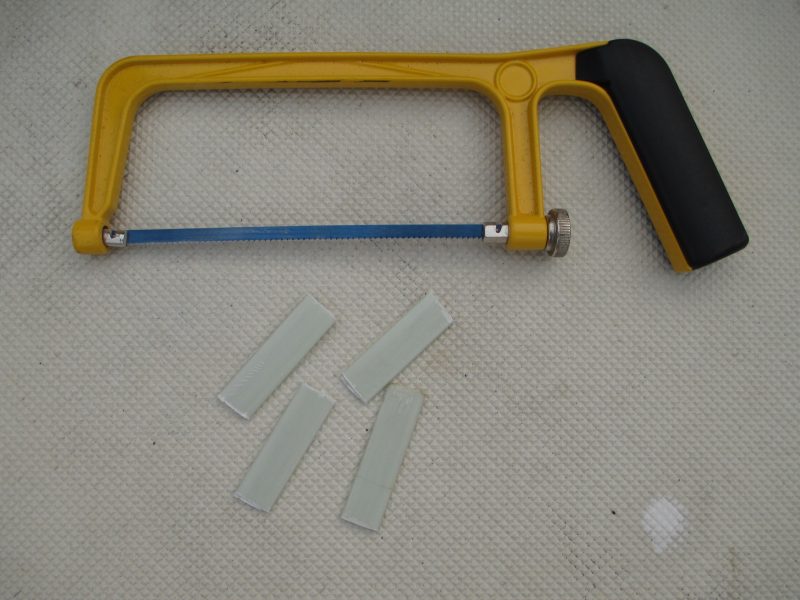
Their location makes them easy to inspect and service. On the original install, I used Gorilla Glue to fasten the feet. On one replacement, I had trouble with their holding, so I used rubber cement instead and it worked. I have since returned to Gorilla Glue with success.
This article was meant to demonstrate problem-solving with the resources at hand. Further wear to the channels and hatch has been prevented, allowing me enjoyment and use of the boat, and to focus on more pressing maintenance. I have been fortunate that it has continued to still serve me after six years. A proper repair is still on my list of to-dos. In addition to rebuilding the runners and channels, I plan to build a sea hood too.
For people who want to have big adventures on small budgets, The Resourceful Sailor hopes to give ideas on how to make this happen. Remember, keep your solutions prudent and safe, and have a blast.
Westwind Boat Detailing
Entangled Whale, Crew Overboard, Boat Grants
Watch for Entangled Whales
On July 10, members of the Coast Guard, NOAA Fisheries’ Large Whale Entanglement Response Team, the Marine Mammal Center and Cascadia Research Collective freed an adult whale. The humpback had become entangled in commercial crab gear and a weather buoy mooring approximately 40 miles off Point Reyes.
Cascadia Research Collective crewmembers spotted the distressed whale at approximately 5 p.m. on July 9 and contacted NOAA Fisheries’ stranding coordinator. They reported that the humpback was in poor condition, with multiple lines wrapped around it. NOAA requested assistance from Coast Guard Sector San Francisco. The CG dispatched a 47-ft Motor Lifeboat crew from Station Golden Gate and transported members from NOAA and the Marine Mammal Center to the distressed whale.
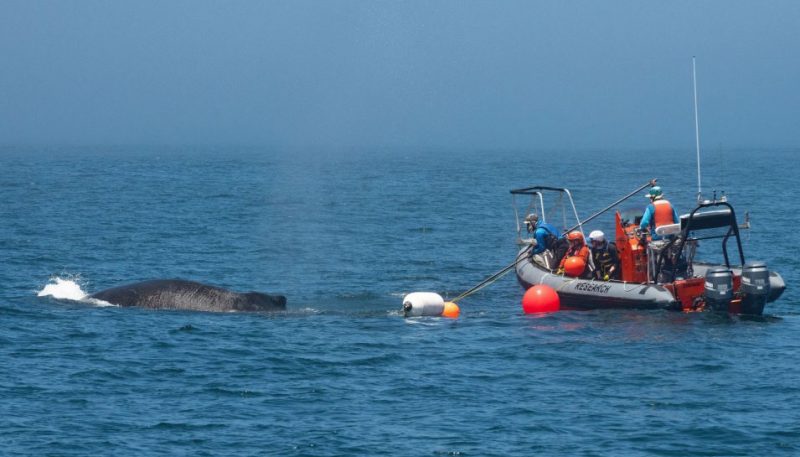
After several hours of working to free the whale, the rescuers succeeded in cutting it free from the weather buoy mooring; it swam away.
“This entangled whale was very far offshore and provided many challenges to the team,” said Justin Viezbicke, NOAA Fisheries’ Marine Mammal stranding coordinator. “We simply could not have freed this whale if it hadn’t been for the Coast Guard’s assistance in providing long-range transportation and the trained volunteers who dropped everything to respond.” NOAA is investigating the entanglement.
The Coast Guard and NOAA are asking the public to report entangled whales by calling 1-877-SOS-WHALE (767-9425).
Live Crew Overboard Training
The Bay Area Multihull Association will conduct a Live Crew Overboard Training on Sunday, August 18, at 11 a.m. at the mouth of Richardson Bay, just outside Sausalito.
Truls Myklebust of BAMA writes, “We’re doing it for the first time this year. This has been a hot-button issue for me for safety. We are all required to do crew-overboard training exercises as part of preparedness for offshore races, but almost everybody does that with a fender and a bucket. While that’s useful, it’s not at all like recovering an actual person from the water. And, as stated in the recent US Sailing report from the crew-overboard fatality in the Chicago-Mackinac race, things can go horribly wrong, even with experienced crew on boats that have all the equipment on hand.
“So we’re doing this as a live crew-overboard exercise, with people jumping into the water, with additional support craft on scene for safety. A number of safety precautions will apply, including having the jumpers wear wetsuits, helmets and a VHF radio in addition to their life vests. We’re doing this as a club event for BAMA this year, so it’s multihull-focused. After we have gone through this once and learned what worked and what didn’t work in terms of the event format, we have thought about opening it up to the broader sailing community next time. We have already heard interest from several monohullers.”
Sign up for the event on Jibeset at www.jibeset.net/BAMA000.php?RG=T004174366.
Clagett Grant Applications Open
The Rhode Island-based C. Thomas Clagett, Jr. Memorial Clinic and Regatta is accepting applications for the 2019 Clagett Boat Grant Program. The program will donate two 2.4mR boats. They invite applications from individual sailors and community sailing programs in North America until October 1. The 2.4mR is a singlehanded keelboat used in adaptive sailing.
“We are now in the fourth year of the Clagett Boat Grant Program,” commented Clagett president and co-founder Judy Clagett McLennan. “It was a wonderful sight at the recent Clagett Regatta in Newport to see five of the Boat Grant Program boats racing, four in the 2.4mR class and one in the Sonar class. Sailors have benefited from this program from across the US and Canada. We look forward to granting two more boats to sailors who are eager to progress with their competitive sailing skills.”
Delani Hulme-Lawrence, from St Paul, Victoria, BC, received her 2.4mR in the 2017 round of the Clagett Boat Grant Program. She raced in Newport in June and went on to compete at the Para World Sailing Championships in Spain. “Through both the exceptional training opportunities and state-of-the-art equipment, having the support of the Clagett has revolutionized my sailing,” she remarked. “My progress and development have been accelerated. My recent success can be largely attributed to the Clagett. They are a vital piece of my success since the boat grant.”
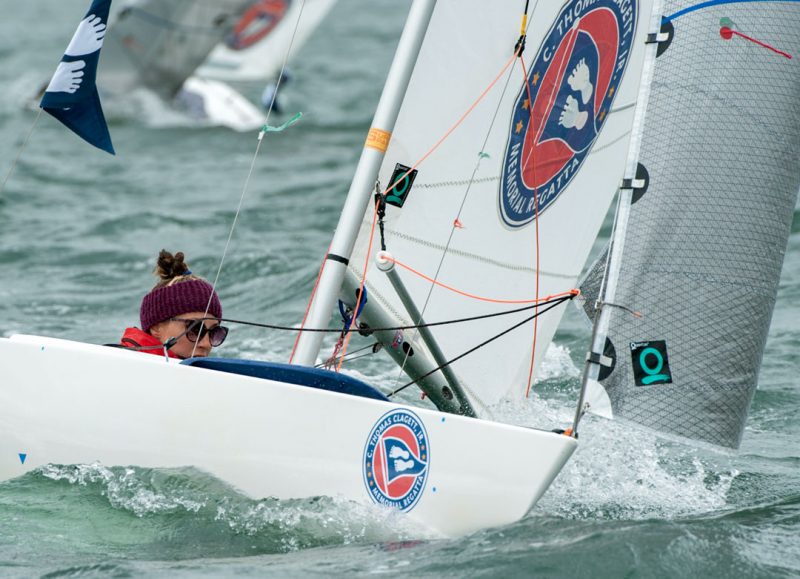
To apply for the 2019 Clagett Boat Grant Program, go to https://clagettregatta.org/Boat-Grant-Program. You can submit your application by mail to Clagett Regatta, 231 Indian Ave., Portsmouth, RI 02871, or via email to [email protected].

